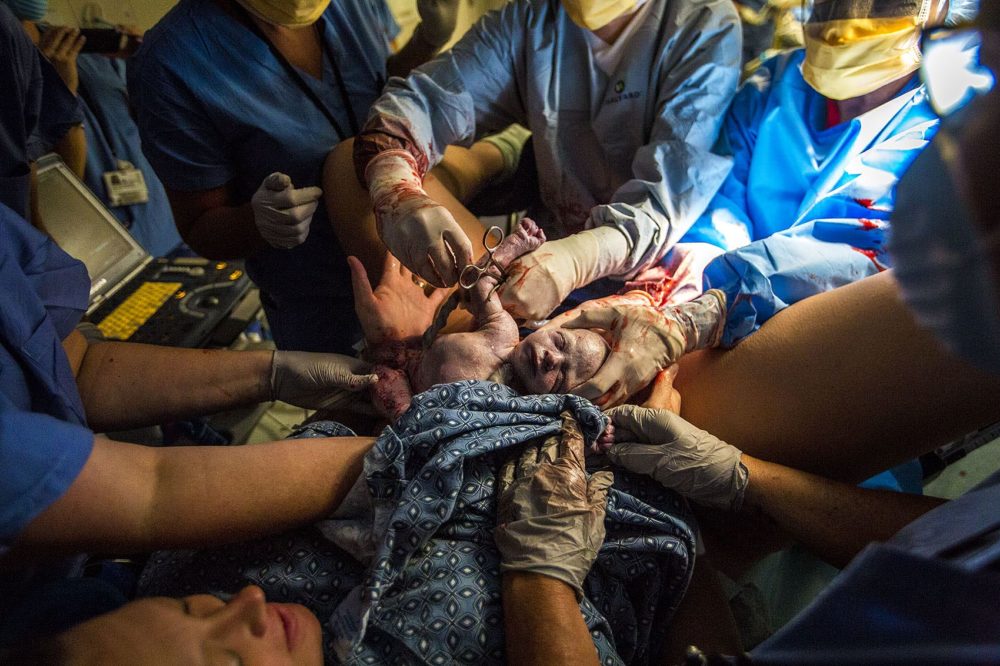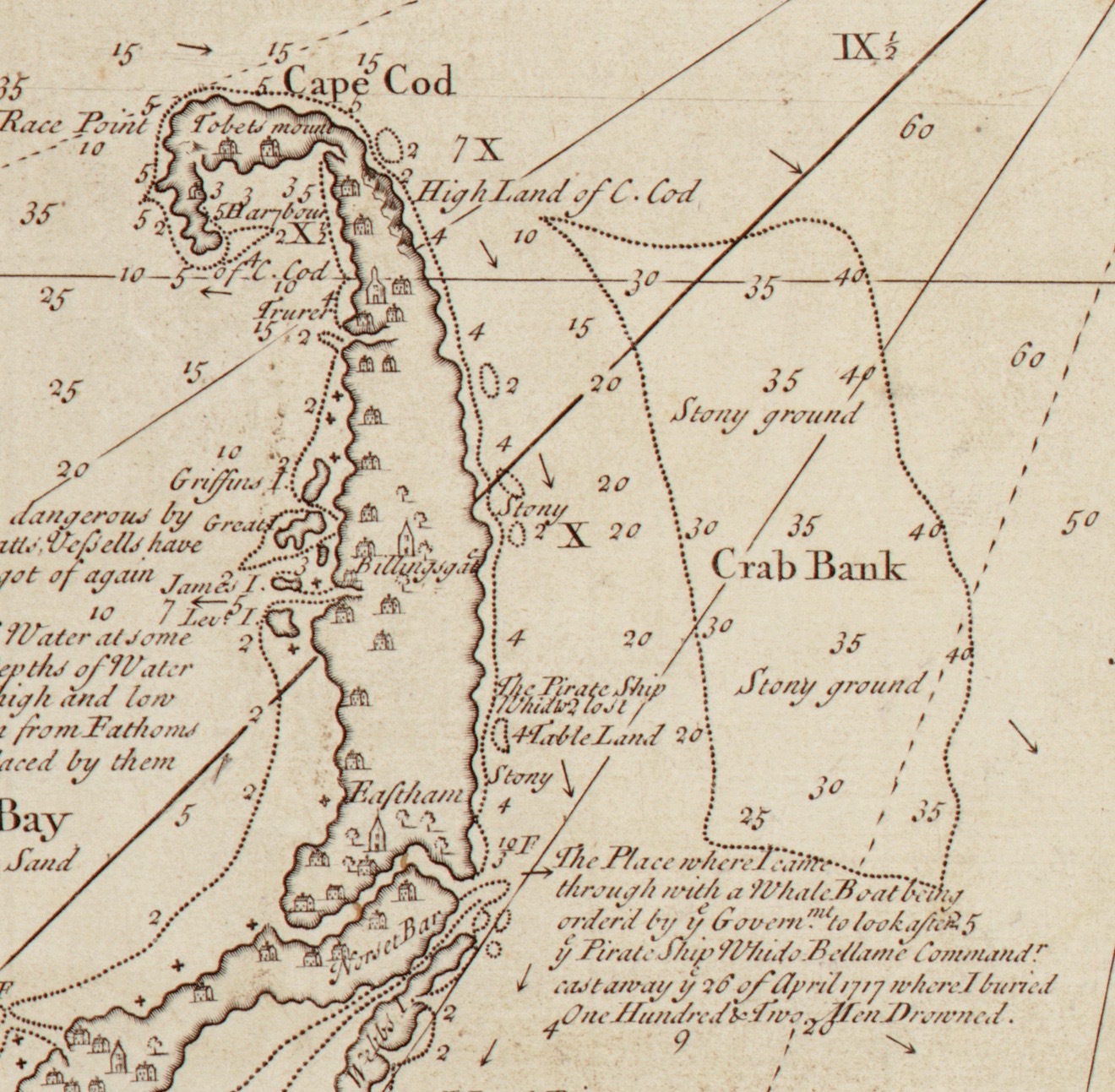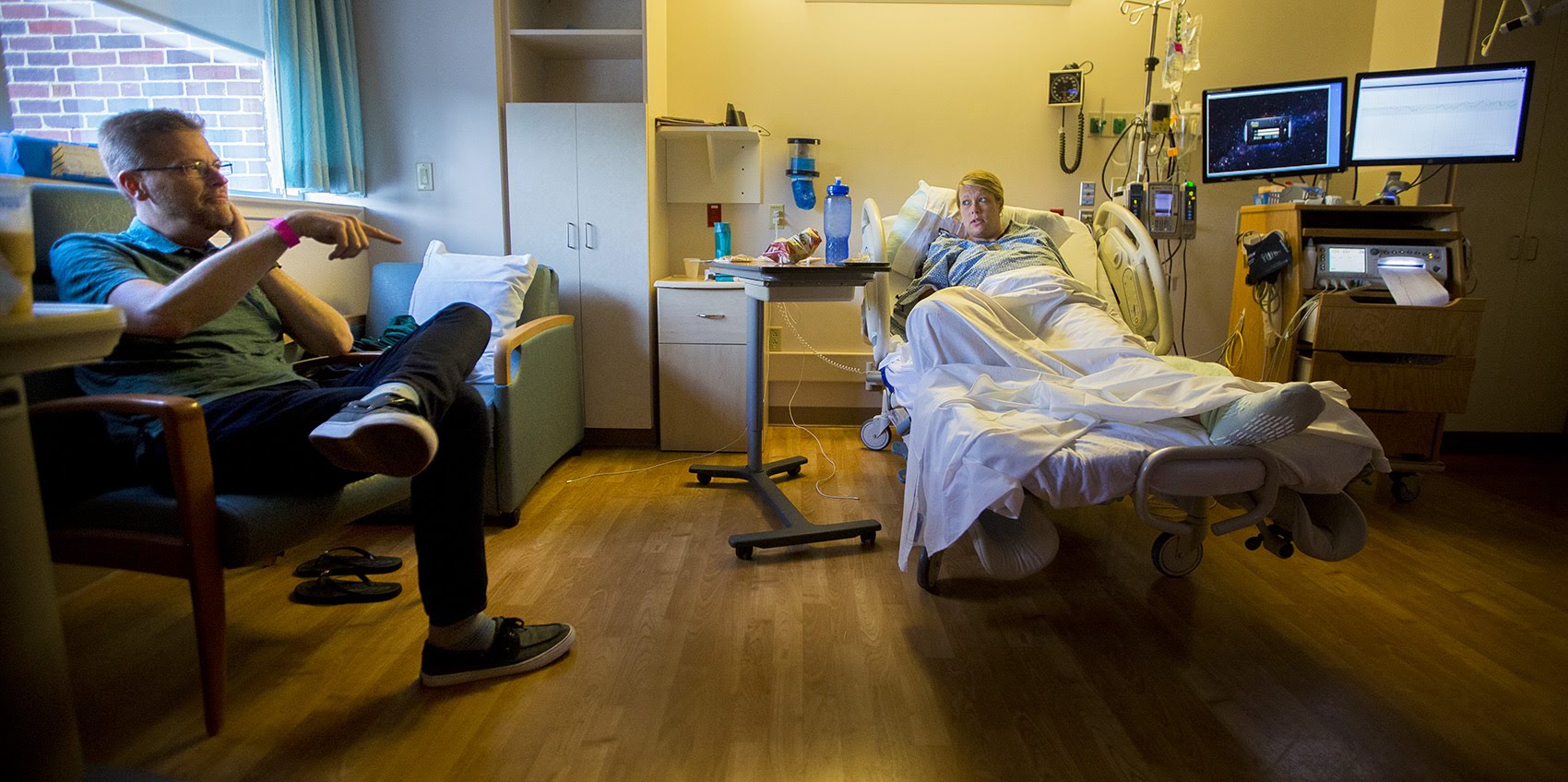Episode 126: Doctors, New Parents Work To Prevent C-Sections; Building A Better Life Jacket For Lobstermen

This week on NEXT: we go inside a delivery room to hear a new project in action. Plus, we learn about a research team that’s working to build a better lifejacket. And, we discuss the shipping industry and the history of pirates in our region. Finally, a New England town celebrates it’s rich literary history.
It’s NEXT.
New Project Aims to Reduce Rate of C-Sections

The obstetrics team at South Shore Hospital work as baby Bryce is born and placed on Melisa to see. Photo by Jesse Costa for WBUR
In the United States in 2016, 31.9 percent of all deliveries were by cesarean, or as it’s better known, C-section, that’s according to the Centers for Disease Control and Prevention.
For mothers who deliver children by C-section there are greater risks involved, and often the surgery is not a medical necessity. In our region, more than 35 percent of all live births in Connecticut were cesareans in 2016. That places Connecticut in the top five of the nation for that year. In contrast, Vermont boasts one of the lower rates, with about 26 percent of cesarean births.
But a new project is working to change that. Doctor Atul Gawande’s Ariadne Labs is working on an initiative to drive the numbers of C-sections even lower, the “BetterBirth” project.
To learn more about the project, and what it actually looks like in the delivery room, we’re going to take you to a place we usually don’t get to go: inside the hospital room during the birth. The mother, from Hanover, Massachusetts, already had four children when she delivered twin boys on the last day of August, right around dinner time.
WBUR’s Martha Bebinger takes us to South Shore Hospital in Weymouth where Melisa and Shaun McDougall have just checked in.
See more amazing photos from WBUR’s Jesse Costa.
Researchers Work to Build a Better Life Jacket

Sternman Frank Lenardis hauls lobster traps to the back of the boat, as part of what lobsterman Steve Holler refers to as “a dance between me and him.” Photo by Hannah Chanatry for WBUR
Commercial fishermen in New England are required to have life jackets on their boats, but they’re rarely, if ever, worn. That’s a dangerous practice for lobstermen. In Massachusetts, falls overboard are the leading cause of death while on the job. Now a research team is trying to change that outcome by changing the life jackets, not the fishermen. WBUR’s Hannah Chanatry reports.
Maine Entrepreneur Grows Elver Business

Sam Richman, owner-chef of Sammy’s Deluxe restaurant in Rockland, with some full-grown American Unagi. He says his patrons tend to prefer it smoked, European style, rather than as Japanese sushi. Photo by Keith Shortall for Maine Public
Maine is the only state with a significant fishery for transparent “glass eels,” otherwise known as elvers. They can fetch thousands of dollars a pound when shipped to Japan, China, and other Asian countries, where they are grown to market size. Now, one Maine entrepreneur wants to add the value herself, growing eels to full-size here, a first for the U.S. As part of his series, “Aquaculture’s Next Wave,” Maine Public Radio’s Fred Bever reports that the startup, American Unagi, is showing early signs of success.
The Shipping Industry in New England

The container ship, El Morro, the nearly-identical sister ship of El Faro. Photo courtesy of Paul Haley and Rachel Slade
In our day and age, we don’t often hear about shipwrecks. But in 2015, a huge container ship sank between Florida and Puerto Rico on a routine route, during Hurricane Joaquin. From the wreck, 33 mariners died, eight of whom were from New England. How, in the age of advanced technology, did this happen? Boston-based journalist Rachel Slade digs into the factors behind the wreck, as well as the history and the future of this massive industry, in her new book: Into the Raging Sea: Thirty-Three Mariners, One Megastorm and the Sinking of El Faro.
New England’s Role in the “Golden Age” of Pirates

Detail of Cyprian Southack’s map of Massachusetts, circa 1734. A thick arrow (not original to the map) points to where Southack wrote “The Pirate Ship Whidah Lost.” Below that to the right is more text in which Southack informs the reader that he buried 102 men from the wreck who had drowned. Courtesy of Library of Congress, Geography and Map Division
 When you think of pirates you probably think of skull and crossbones, wooden legs, parrots, eye patches, and marauders swashbuckling their way through the Caribbean.
When you think of pirates you probably think of skull and crossbones, wooden legs, parrots, eye patches, and marauders swashbuckling their way through the Caribbean.
But the New England colonies actually played an important role in the “Golden Age” of piracy, a period that spanned the late 1600s through the early 1700s. That’s the subject of Eric Jay Dolin’s new book, Black Flags, Blue Waters: The Epic History of America’s Most Notorious Pirates.
John Dankosky interviews Dolin and they talk about the often overlooked history of pirates from our region’s past.
Read an excerpt of the book here.
Moby Dick Marathon Brings Visitors to New Bedford
In the mid 19th Century, New Bedford was one of the world’s whaling capitals. The whaling industry is long gone, but New Bedford is drawing in fans of the world most famous leviathan. RIPR’s John Bender has the story.
The 23rd Annual Moby-Dick Marathon will take place in New Bedford on January 4-6, 2019.
Photo at the top of the page: Shaun and Melisa McDougall, of Hanover, are checked into South Shore Hospital where Melisa will deliver twin boys. They don’t want a C-section, which fits the goals of Ariadne Lab’s Team Birth Project, now in the testing phase at South Shore. Photo by Jesse Costa for WBUR
About NEXT
NEXT is produced at Connecticut Public Radio
Host: John Dankosky
Producer: Lily Tyson
Digital Producer: Carlos Mejia
Senior Director: Catie Talarski
Contributors to this episode: Martha Bebinger, Hannah Chanatry, Fred Bever, John Bender
Music: Todd Merrell, “New England” by Goodnight Blue Moon, “One Big Family” by Mean Lady, “On the Ocean” by Guster
—
New to NEXT? You can find every episode or one you missed within our archives.
We need your feedback! Send critiques, suggestions, questions, and ideas to next@ctpublic.org. Help us spread the word! If you like what you hear, rate and review us on iTunes.


